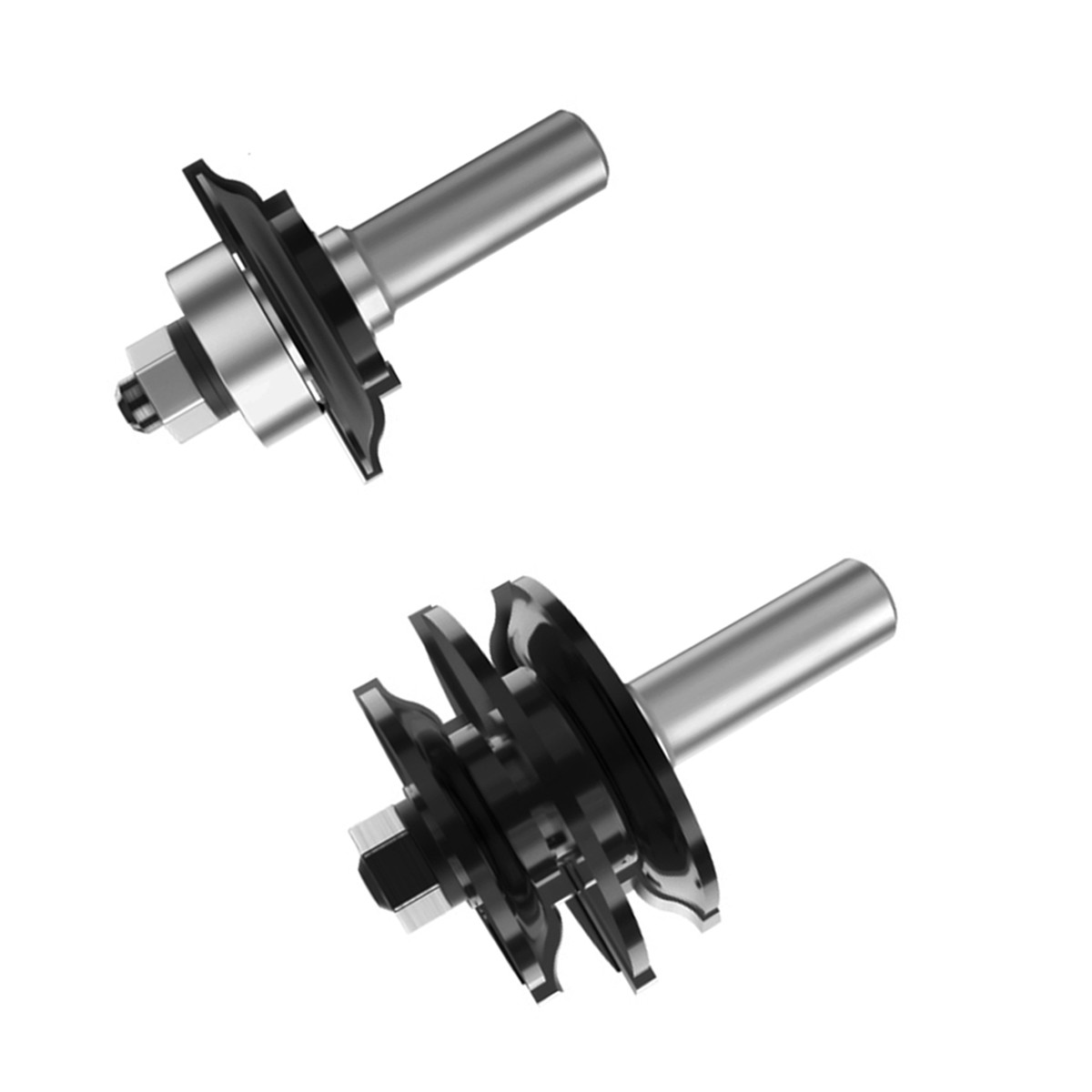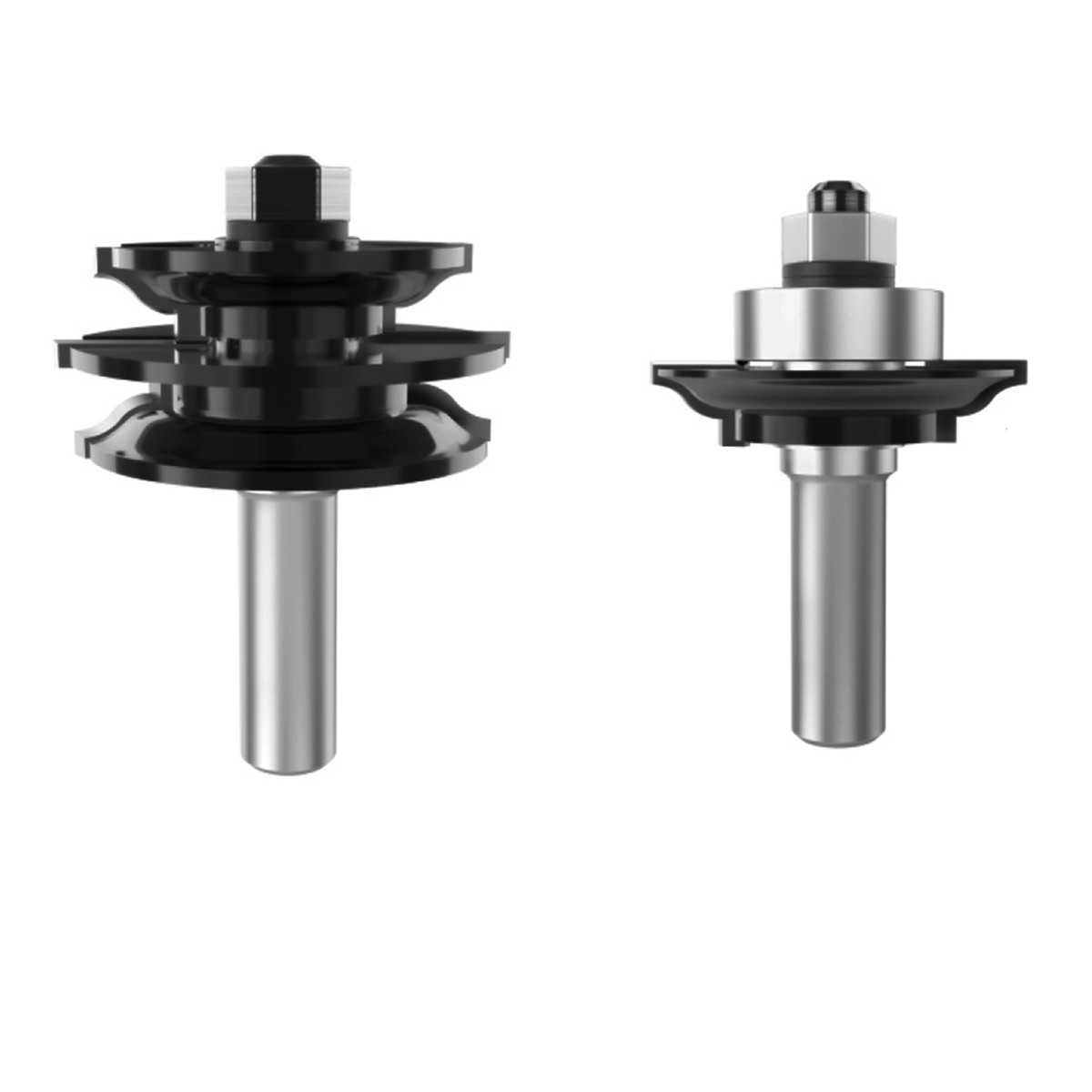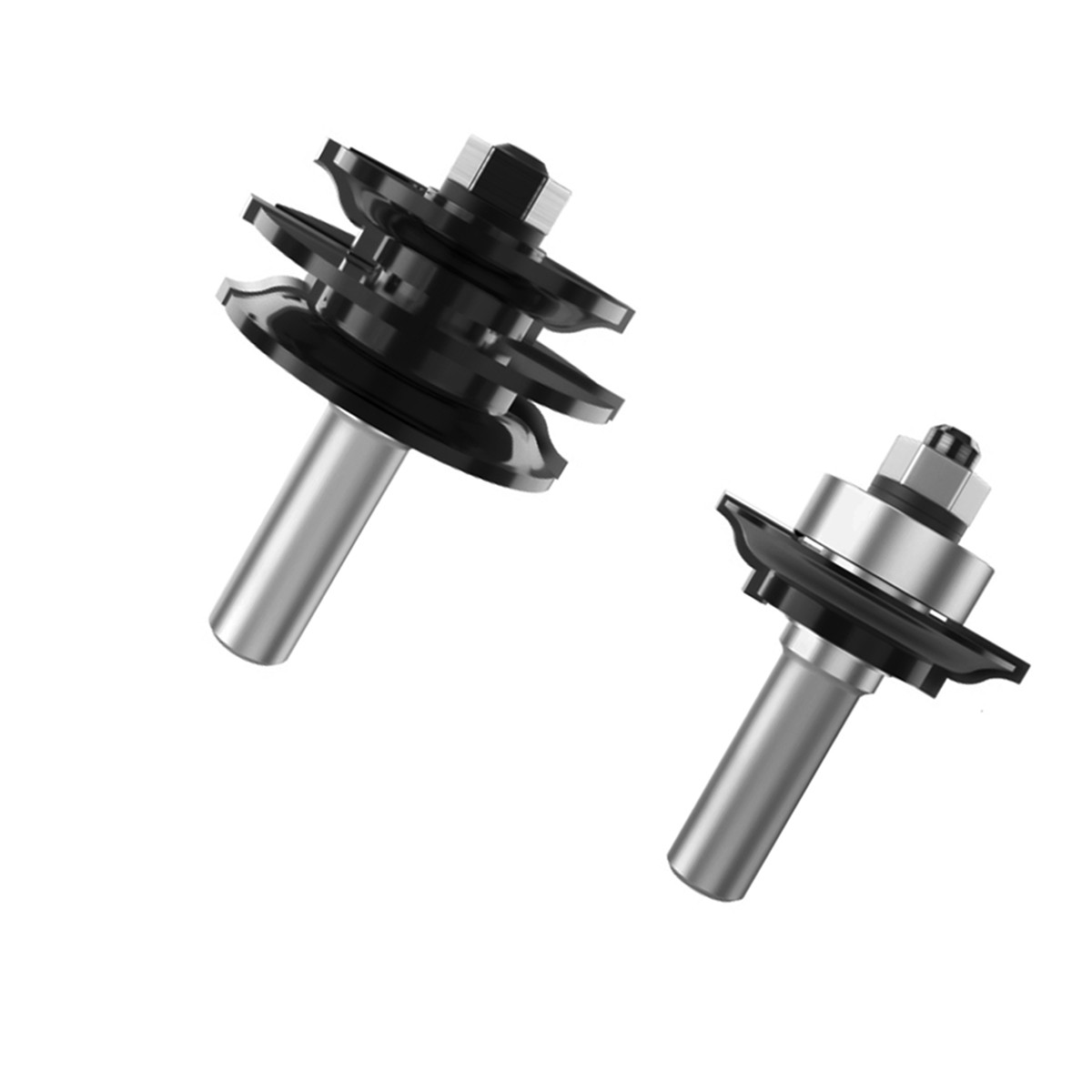Router Bits for Cabinet Doors with Glass Inserts

Creating cabinet doors with glass inserts is a great way to add a touch of elegance and sophistication to your home. Whether you’re a seasoned woodworker or just starting out, choosing the right router bits is crucial for achieving clean, precise cuts and a professional-looking finish.
Router Bit Types for Glass Insert Cabinet Doors
Router bits designed for creating cabinet doors with glass inserts come in various shapes and sizes, each with its unique purpose.
- Rabbet Router Bits: These bits create a groove or recess along the edge of the cabinet door, which will hold the glass insert. Rabbet bits are available in various sizes, so you can choose the one that’s best suited for your project.
- Flush Trim Router Bits: These bits are used to trim the edges of the glass insert, creating a flush and seamless look. Flush trim bits are typically used in conjunction with a template, which helps to ensure that the glass is cut to the correct size and shape.
- Ogee Router Bits: These bits create a decorative profile on the edge of the cabinet door, adding a touch of elegance to the design. Ogee bits are often used in conjunction with a rabbet bit to create a recessed area for the glass insert.
- Bead Router Bits: These bits create a raised bead along the edge of the cabinet door, adding a decorative element. Bead bits are available in various sizes and profiles, so you can choose the one that best suits your design.
Router Bit Features and Benefits
Each type of router bit has its unique features and benefits, making it ideal for specific applications.
- Rabbet Router Bits: Rabbet bits are designed to create a groove or recess, which allows the glass insert to sit securely within the cabinet door. They offer a clean and precise cut, ensuring a perfect fit for the glass.
- Flush Trim Router Bits: Flush trim bits are essential for creating a smooth and seamless finish around the glass insert. They ensure that the glass is cut to the exact size and shape, preventing any gaps or uneven edges.
- Ogee Router Bits: Ogee bits are versatile and can be used to create a decorative profile on the edge of the cabinet door while simultaneously creating a recess for the glass insert. This creates a visually appealing and functional design.
- Bead Router Bits: Bead bits are ideal for adding a decorative element to the edge of the cabinet door. They create a raised bead, which can be used to enhance the overall design of the door.
Router Bit Comparison Table
Here is a table comparing the different types of router bits for cabinet doors with glass inserts:
| Router Bit Type | Size | Shape | Application |
|---|---|---|---|
| Rabbet Router Bit | Variable | Groove or Recess | Creating a recess for the glass insert |
| Flush Trim Router Bit | Variable | Flush Trim | Trimming the edges of the glass insert |
| Ogee Router Bit | Variable | Ogee Profile | Creating a decorative profile and recess for the glass insert |
| Bead Router Bit | Variable | Raised Bead | Adding a decorative element to the edge of the cabinet door |
Techniques for Cutting Glass Inserts with Router Bits

Cutting glass inserts with router bits requires precision, care, and a good understanding of the process. While it’s not a common practice, it can be done for unique designs or when working with specific types of glass. This section will provide insights into the techniques involved, emphasizing safety and accuracy.
Cutting Glass Inserts with Router Bits, Router bits for cabinet doors with glass inserts
Using router bits to cut glass inserts is a delicate process that requires specialized equipment and techniques. The key is to use a very sharp, diamond-tipped router bit designed for glass cutting. This ensures a clean, precise cut with minimal risk of chipping or cracking the glass.
- Safety First: Always wear safety glasses and gloves when working with glass. The process can create sharp edges, and it’s crucial to protect yourself from potential injuries.
- Secure Setup: The glass insert must be securely clamped to a stable work surface. This prevents movement during the cutting process, ensuring a straight and accurate cut.
- Controlled Feed Rate: The router bit should be fed slowly and steadily across the glass. Too much pressure can cause the glass to crack, while too little pressure can result in a rough cut.
- Lubrication: Use a water-based lubricant to reduce friction and heat during the cutting process. This helps prevent the glass from overheating and cracking.
- Post-Cut Finishing: After cutting, the edges of the glass insert should be smoothed with a fine-grit sandpaper to remove any sharp edges.
Preventing Glass Breakage
Several factors contribute to glass breakage during the cutting process. Here are some tips to minimize the risk of glass cracking:
- Use a Sharp Router Bit: A dull router bit will cause excessive friction and heat, increasing the risk of glass breakage. Always use a sharp, diamond-tipped bit designed for glass cutting.
- Avoid Excessive Pressure: Apply even, consistent pressure throughout the cutting process. Avoid pushing too hard, as this can cause the glass to crack.
- Maintain a Consistent Feed Rate: Keep the router bit moving at a steady pace. Sudden changes in speed can cause stress on the glass, leading to breakage.
- Proper Support: Ensure the glass is adequately supported during the cutting process. This helps distribute the force evenly and reduces the risk of cracking.
- Use a Lubricant: A water-based lubricant helps reduce friction and heat, minimizing the risk of glass breakage.
Designing and Creating Cabinet Doors with Glass Inserts

Designing and creating cabinet doors with glass inserts is a fun and rewarding project. You can use a router bit to create a sleek, professional-looking door that will add a touch of elegance to any room. This process involves designing the door, creating a template for the glass insert, and assembling the door.
Creating a Template for the Glass Insert
To ensure a perfect fit for your glass insert, it’s essential to create a precise template. The template acts as a guide for cutting the glass and ensures the glass insert sits flush with the cabinet door.
Here are some steps for creating a template:
- Measure the glass insert size: Determine the exact dimensions of the glass insert you want to use for your cabinet door.
- Choose a material: You can use a variety of materials for your template, such as plywood, MDF, or even cardboard. Make sure the material is sturdy enough to hold its shape and resist warping.
- Cut the template: Cut the template to the exact dimensions of the glass insert. Use a jigsaw or a band saw for accurate cutting.
- Create a lip: Around the edges of the template, create a lip that’s slightly larger than the thickness of the glass insert. This lip will help to hold the glass insert in place.
- Mark the center: Mark the center of the template to ensure the glass insert is centered within the cabinet door.
Assembling the Cabinet Door
Once you have your template ready, you can start assembling the cabinet door. This process involves creating the frame, cutting the glass insert, and attaching the glass insert to the frame.
- Cut the frame: Using the router bit, cut the frame of the cabinet door. Make sure the frame is slightly larger than the glass insert to accommodate the lip of the template.
- Cut the glass insert: Using a glass cutter and the template, cut the glass insert to the desired size. Remember to wear safety goggles during this process.
- Attach the glass insert: Place the glass insert into the frame. Secure the glass insert to the frame using adhesive, such as silicone sealant or construction adhesive. Apply the adhesive to the lip of the template and carefully press the glass insert into place.
- Finish the door: Once the glass insert is securely attached, finish the cabinet door by sanding, painting, or staining it.
Router bits for cabinet doors with glass inserts – Router bits designed for cabinet doors with glass inserts are essential for creating clean, precise cuts that accommodate the glass panels. These bits are crucial for achieving a professional finish, especially when working on projects like a glass front curio cabinet , where the glass is a prominent design element.
The right router bit ensures the glass fits snugly, preventing any movement or rattling, resulting in a stunning and functional cabinet.
Router bits for cabinet doors with glass inserts are essential for creating a clean and professional finish. These bits are designed to precisely cut the rabbet that will hold the glass, ensuring a secure and aesthetically pleasing result. For inspiration, consider the intricate details found in antique glass fronted wall cabinets , where the glass panels often showcase a decorative edge or intricate patterns.
Whether you’re crafting a modern or traditional cabinet, the right router bit will help you achieve a stunning glass insert that elevates the overall design.
